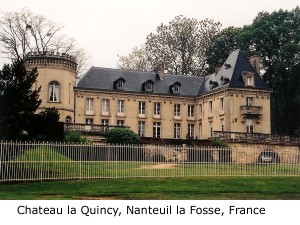It was spring 2004 almost one year after the American-led invasion of Iraq – a policy that was not well accepted in France. We had not sensed any hostility from the French people towards Americans, but many were clearly unhappy with the actions of the American government.
We had been touring battlefields near Chateau-Thierry and in particular Belleau Wood, the scene of the United States Marines’ month long struggle to capture that tough piece of terrain from entrenched German defenders. Our accommodations were to the east of Chateau-Thierry in a small B&B owned by two Americans who had spent their professional careers working in Paris. They retired to enjoy the rural French lifestyle and ran the B&B as a sideline. On the evening that we arrived, over a glass of white wine, they told us the following story.
 The French are great for commemorations of the events of the two world wars. The First World War is remembered each year in every town and village on 11 November typically with a simple commemoration at the town’s war memorial followed by a vin d’honneur – a mini reception of Champagne and canapés held in the village hall. Cities frequently celebrate with elaborate parades and ceremonies, such as that at the Arc de Triomphe in Paris. To a lesser extent, the Second World War is commemorated on 8 May. American contributions to both wars are recalled during ceremonies at the nineteen American military cemeteries in Europe on Memorial Day in late May. Continue reading
The French are great for commemorations of the events of the two world wars. The First World War is remembered each year in every town and village on 11 November typically with a simple commemoration at the town’s war memorial followed by a vin d’honneur – a mini reception of Champagne and canapés held in the village hall. Cities frequently celebrate with elaborate parades and ceremonies, such as that at the Arc de Triomphe in Paris. To a lesser extent, the Second World War is commemorated on 8 May. American contributions to both wars are recalled during ceremonies at the nineteen American military cemeteries in Europe on Memorial Day in late May. Continue reading

